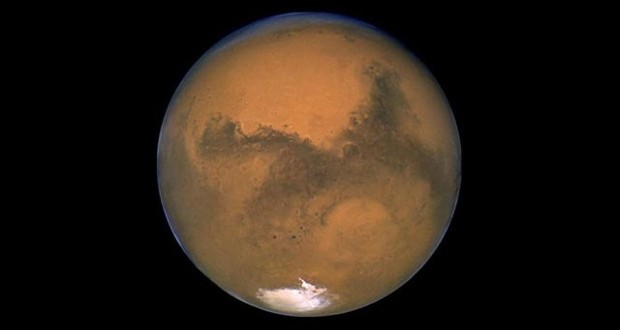Life on Mars? ExoMars mission to study methane mystery may provide answer.
The European Space Agency and Russia’s Roscosmos sent two robots to Mars, successfully kicking off the first of its two-part ExoMars mission.
The Trace Gas Orbiter (TGO) and Schiaparelli, a lander, were carried by a Russian rocket that blasted from Kazakhstan early this morning.
The satellite is set to enter Mars’ orbit, and the lander to reach the Martian surface, in October.
ExoMars is designed to test for signs of Methane—and Methane-based extraterrestrial life—on the red planet as well as test out technology for a Mars rover, and scope out the area for a suitable landing spot for it. The arrival of the rover, scheduled for 2018, marks phase two of the ExoMars mission.
The secondary goal of the ExoMars mission is to reintroduce Europe and Russia to the Martian space race. Space.com points out that NASA has been dominating other international agencies when it comes to exploring Mars:
Russia hasn’t had any sort of Mars success since 1989, when the Soviet Union’s Fobos 2 mission obtained orbital observations prior to a failed landing. The European Space Agency (ESA) has operated the Mars Express orbiter since 2003, but it hasn’t mounted a successful surface mission on the Red Planet yet. (Mars Express carried a lander named Beagle 2, which never phoned home to its controllers after touching down.)
Jorge Vago, a project scientist on the mission, said “We know that the Americans know how to do it; what we want in Europe is to be capable of doing it too,” adding, “To ride the future of space conquest, we need certain capabilities. If not, we’ll always be left painting the rocket rather than providing the engine.”
NASA was involved in this mission until 2012, when it dropped out and was replaced by Roscosmos.
ESA Director General Jan Woerner also pointed to ExoMars as a politically significant undertaking. “There is a political meaning and purpose to this mission: working together beyond national borders, beyond crises on Earth,” he told Bloomberg, adding, “We use a Russian launcher, with American contribution and it’s a European mission. We’re over earthly crises with this space mission.”
Liftoff of @ESA_ExoMars on a Proton-M rocket from Baikonur at 09:31 GMT #exomars pic.twitter.com/ggqaSjIJZ5
— European Space Agency (@esa) March 14, 2016
We’ll have to wait until October to see how the satellite and the lander fare on Mars, but at least we had a pretty good view of liftoff from Earth.
Agencies/Canadajournal
 Canada Journal – News of the World Articles and videos to bring you the biggest Canadian news stories from across the country every day
Canada Journal – News of the World Articles and videos to bring you the biggest Canadian news stories from across the country every day



